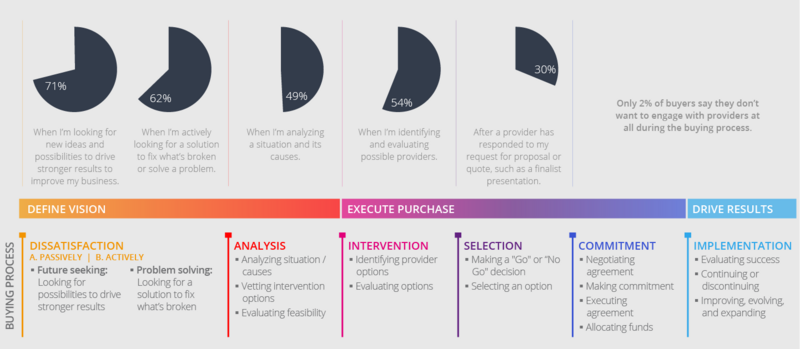ATD Blog
How Sales Is Changing
Thu Jan 02 2020

Bookmark
In the last 30 years, we’ve seen an evolution in the way sellers sell, the way buyers buy, and what’s required of sales leadership and enablement teams.
It’s gone something like this:
The past (1990s–2000s): Many sellers transformed from product pitch selling to consultative selling.
Today (2010s): Many sales organizations strive to be consultative sellers and idea drivers. Value-based selling/insight selling/idea driving are buzzwords, and many sellers are experiencing success using these strategies.
The future (2020s and beyond): Soon, sellers will need to be value-based consultative agents and idea drivers, and they’ll need to be multiskilled change agents. They’ll need to talk about outcomes and the effect their product and services can have on their customers’ businesses. They’ll also need many different skills to fill the pipeline, uncover needs, craft solutions, negotiate, develop strong relationships, and effectively manage their time and day.
But it’s becoming even more than that. The future seller must possess the business acumen and the context to conversations where they provide decision support for buyers. They need to be change agents, driving customers to think and act differently.
In these ways, the sellers themselves will need to become the value.
Leading sales organizations are beginning to take notice. A recent study from the RAIN Group Center for Sales Research found that 40 percent of sales enablement and sales leaders agree that developing sales skills is challenging. At the same time, their primary priority in the next 12 months is on improving sellers’ ability to communicate value.
Yet we frequently hear from sales leaders that their sellers just go in and pitch product. Few companies are ahead of the curve in developing sellers who are value-driving change agents. These are the companies and sellers that will win in the future.
Buying Is Changing
At the same time, buying has changed. There are more choices than ever, buyers are coming to meetings with greater knowledge, they’re critical of sellers, and there is greater pressure to get more for less. Buyers are also less loyal and more open to switching to new providers.
In our Top Performance in Sales Prospecting study, 82 percent of buyers said they’re willing to accept meetings with sellers. They’re also willing to talk to sellers early (despite what other research might say).
Seventy-one percent of buyers want to talk to sellers when they’re looking for new ideas and possibilities to drive stronger business results.
Sixty-two percent of buyers want to talk to sellers when they’re actively looking for a solution to fix what’s broken or to solve a problem.

Buyers’ expectations for sellers are higher than ever.
Sales Training and Enablement Are Changing
While sellers need to be better than ever, sales training has become more difficult. It’s not enough to train sellers to become experts on your products and services. They need to have expert sales skills. They need to have business acumen. They need to be experts in the industries of your buyers.
As a sales leader, you need to build a sales team with these deep, diverse skills. You need to develop managers to unleash seller potential. You need to generate qualified sales-ready leads. You need to ramp up sellers and teams faster. You need to make lasting changes in seller behaviors and skills.
And you need to do all of this for the least amount possible while showing impressive results.
What Happens if You Don’t Change?
The change imperative is here. Organizations that don’t change will:
Lose to competitors. While your offerings may be better, if your competitors sell the value better than you, you lose. On average, 28 percent of sales are lost to competitors, and 25 percent are lost to no decision.
Experience missed opportunities. If you don’t uncover the full set of buyer needs and inspire them with solutions, you miss an opportunity to sell a broader solution set.
Get beat up on price. If you can’t sell on value and articulate the ROI of your solution, buyers will push you on price and drive down your margins.
Lose key accounts. In fact, 49 percent of buyers who are satisfied with a product would still consider switching providers. If your sellers aren’t focused on strengthening their relationships, competitors will work their way in and squeeze you out.
Lose top sellers. Recruiting and hiring strong sales talent is the primary challenge sales leaders face. There’s nothing worse than losing your top talent and trying to replace them. If you’re not changing, your top sellers will leave and look for a place that’s ahead of the curve.
If you continue doing the same things that you’ve always done, you’re in trouble. Status quo equals failure.
What You Can Do
Any change starts at the top. It’s up to you. The first step is to create a sense of urgency and belief that changing your approach to selling, sales training, and sales enablement is important. If senior leaders, colleagues, and other stakeholders don’t believe it’s important, then you start the change process with a steep hill to climb.
What can you do? Talk to leadership about the changes you’re seeing. Share what could happen if you don’t change. Then decide that change is a priority. The Complete Guide to Sales Training Success outlines a change blueprint and process for developing multi-skilled sellers and sales training that works.
More from ATD

